Does your baby’s cup have toxic heavy metals in it? This enamelware “baby cup” tested positive for 16,200 ppm Cadmium!
Please note: This is NOT a post just about one red enamelware baby cup, it’s an overview of safe and unsafe baby cups I have found and how to make sure you choose a safe cup for YOUR baby! Please take the time to read the whole post (scrolling past all the images) and to share it with your friends who may also have babies in their lives. Thank you!
A mama sent met this little cup to test earlier this year, and it’s now part of my collection of toxic consumer goods!
It is the size of a baby cup and was one from a set that had been purchased for use in her child’s Montessori school. The school administrators purchased one for each child in the class to use during lunch and snack times. The mom had me test it as she knew the speckled enamel campware that I have tested in the past is almost always positive for Lead or Cadmium.
When I tested this small red & white speckled GSI Outdoors enamelware mug with an XRF instrument, the high level of Cadmium found (on the handle, in the area where the enamel coating appeared to be the thickest) was 16,200 ppm. Various regulations consider an item to have a toxic amount of Cadmium if it is in the 40 ppm to 75 ppm range or higher and is intended for use by children. You can read more about the different regulatory standards for Cadmium in this post HERE.
How is it possible that this tiny cup is being sold with 16,200 ppm Cadmium???!!! How does a company get away with that???
Please continue reading below the image.
(which is a parody on a famous piece of art! – h/t Magritte LINK)
Well the answer is… THIS is NOT a baby cup.
This is marketed and sold as an Espresso cup intended for use by adults and therefore the regulatory limits for Cadmium in children’s items do not apply. Click here to see this exact cup on Amazon.*
In my opinion this is a regulatory loophole. If something is sized for use by a child and 90% of consumers would likely buy it for use by a child, it should be regulated as if it were intended to be used by a child. Period. I cannot tell you how often I have found parents giving children espresso cups as baby cups.
Simple Solutions:
DON’T…
- Don’t buy espresso cups for your baby to drink from, they may not be safe.
- Don’t use vintage baby cups for your baby. In fact, any pre-2011 baby cup may have very high levels of Lead (check out these Peter Rabbit and Bunnykins baby dishes as examples.)
- Don’t buy any glass baby cup for your baby that might have painted decorative elements or painted measurement lines. I have found many brands that have used Lead paint on the measurement lines of their baby cups and bottles (and food storage containers) over the past two years.
- Avoid enamelware products unless they are specifically marketed as being intended for use by children.
DO…
- Consider giving your baby a clear glass undecorated (size appropriate) cup to drink from.
- If you are going to purchase a baby cup, purchase only NEW products specifically labeled for use by children (and keep in mind point number 3 above.)
- If you are not sure about brands that might be safe or not, use the search-bar here and look them up on this blog to see if I have tested them (and what the results are.)
Below are links to some baby cup brands I have tested using XRF technology. Each linked post [the words below in RED or GREEN are the post links] lists the XRF results for an example from that brand that has been tested. GREEN links are also followed by a BLUE affiliate link* to an example from that brand on Amazon.
RED means this company has had at least one product that I tested which was positive for unsafe levels of LEAD or Cadmium (do NOT buy these brands!). GREEN means all products I have tested from this brand have been either negative or within safe levels for heavy metals when tested with an XRF instrument (and then there is a little code after each link, with a key to the codes below with more information as to why they are categorized as they are):
- Munchkin [https://amzn.to/2UWojAK ] [c]
- RePlay [https://amzn.to/2Ln2xS2 ]***
- Tommee Tippee [https://amzn.to/2BobK89] [c]
- Avent [https://amzn.to/2QEvizT]***
- Dr. Brown. [https://amzn.to/2Lk9sLW ] [c]
- Nuspin Zoomie [https://amzn.to/2S4QtYh] [c]
- Sigg [https://amzn.to/2Bn2nWp]***
- LifeFactory [https://amzn.to/2S6bB0e]***
- Green Toys [https://amzn.to/2Bn4DNs]***
- Green Sprouts [Lp]
- Hevea [Lp]
- PlanetBox [L]
- Pura Kiki [L]
- Kleen Kanteen. [https://amzn.to/2BphkY5]***
- Thermos [https://amzn.to/2S6EMjU] [L]
- Wedgwood China: PeterRabbit [Lg]
- Bunnykins [Lg]
Key:
*** – these are my personal favorites.
[L] – these brands may have lead under the bottom sealing cap
[Lp] – these brands have had products painted with Lead paint
[Lg] – these brands have had high Lead glaze in the past
[c] – these brands have had some silicone components test positive for trace cadmium (at levels considered safe by all standards).
Continue reading below the image to see the full specific XRF test results for the cup pictured.
When the cup pictured was tested with an XRF instrument it had the following readings:
(Mimium 60-second test. Multiple tests done to confirm levels.)
Reading #1, Bottom of Cup
- Lead (Pb): Non-Detect / Negative
- Cadmium (Cd): 15,400 +/- 300 ppm
- Arsenic (As): 152 +/- 30 ppm
- Barium (Ba): 3,999 +/- 242 ppm
- Antimony (Sb): 328 +/- 75 ppm
- Selenium (Se): 3,993 +/- 92 ppm
- Zinc (Zn): 387 +/- 33 ppm
- Copper (Cu): 61 +/- 32 ppm
- Nickel (Ni): 62 +/- 29 ppm
- Iron (Fe): 741 +/- 87 ppm
- Bismuth (Bi): 79 +/- 19 ppm
- Titanium (Ti): 17,800 +/- 1,000 ppm
Please continue reading below the image.
Reading #2, Handle of Cup
- Lead (Pb): Non-Detect / Negative
- Cadmium (Cd): 16,200 +/- 300 ppm
- Arsenic (As): 343 +/- 34 ppm
- Barium (Ba): 5,496 +/- 240 ppm
- Antimony (Sb): 534 +/- 72 ppm
- Selenium (Se): 4,659 +/- 101 ppm
- Zinc (Zn): 604 +/- 39 ppm
- Copper (Cu): 150 +/- 35 ppm
- Nickel (Ni): 169 +/- 32 ppm
- Iron (Fe): 1,191 +/- 101 ppm
- Bismuth (Bi): 68 +/- 18 ppm
- Titanium (Ti): 20,000 +/- 1,000 ppm
Thank you for reading and for sharing my posts.
As always, please let me know if you have any questions.
Tamara Rubin
#LeadSafeMama
*Amazon links are affiliate links. If you purchase something after clicking on one of my links I may receive a small percentage of what you spend at no extra cost to you. Thank you for supporting my work in this way.




Never Miss an Important Article Again!
Join our Email List


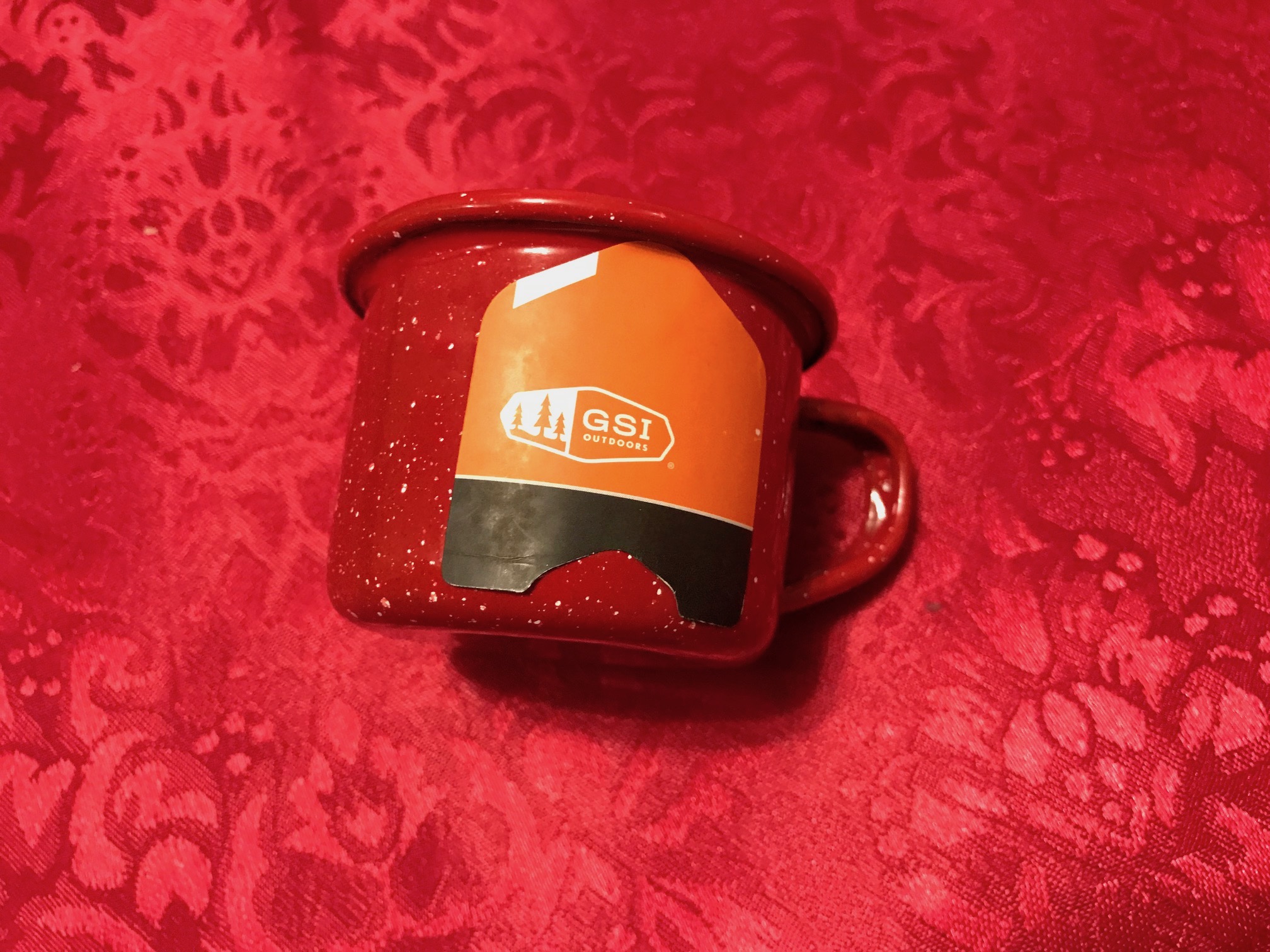
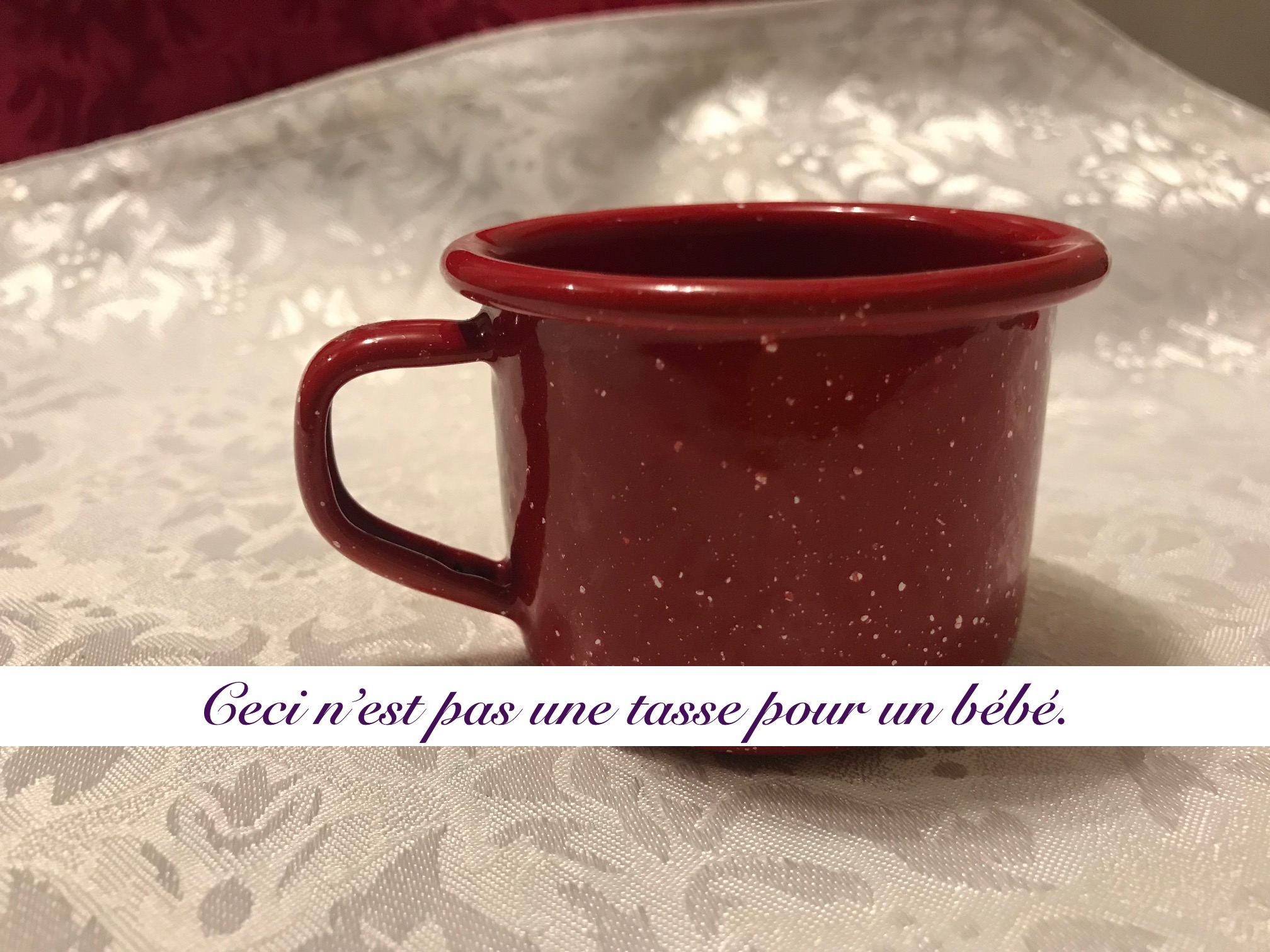
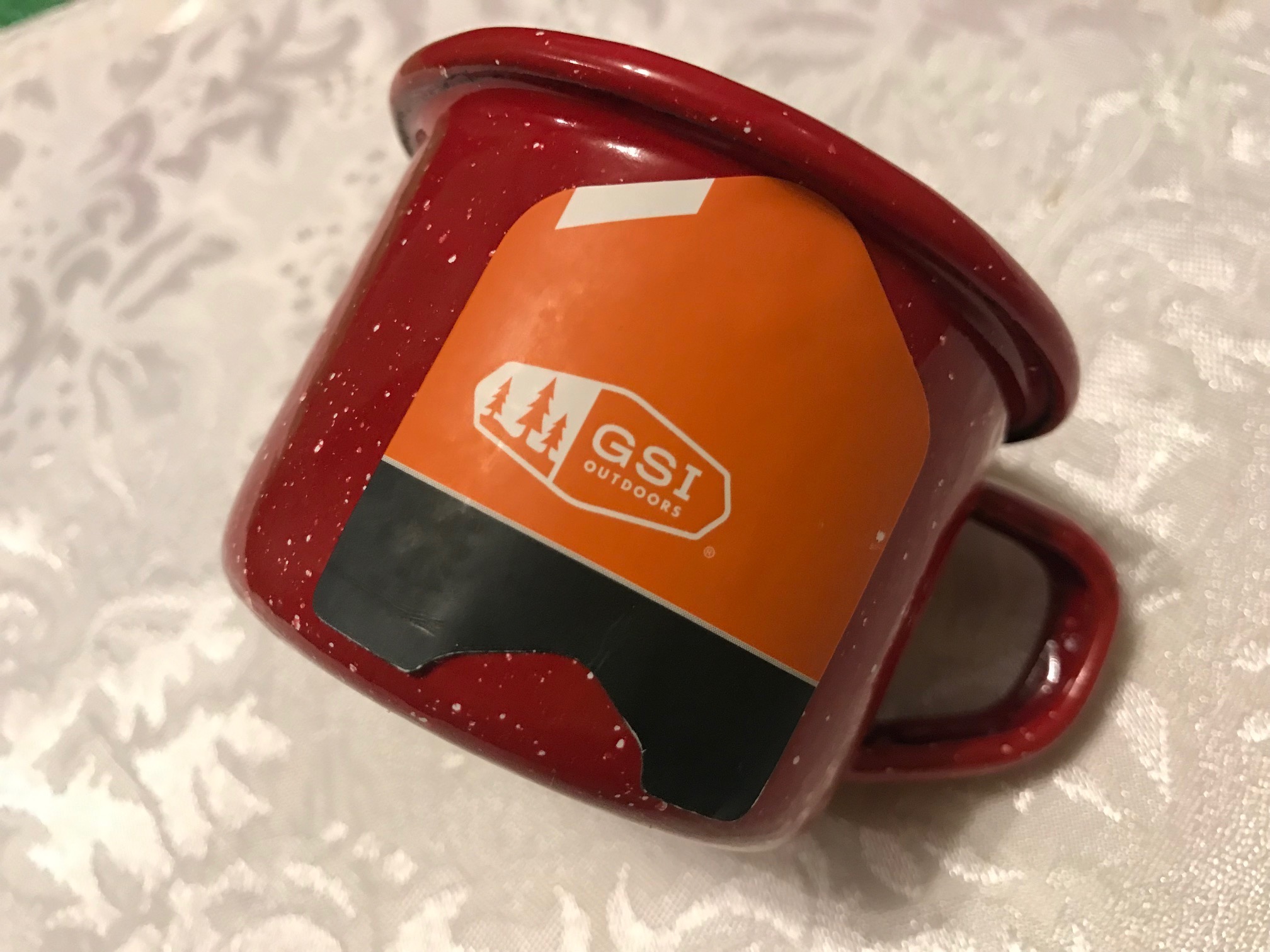
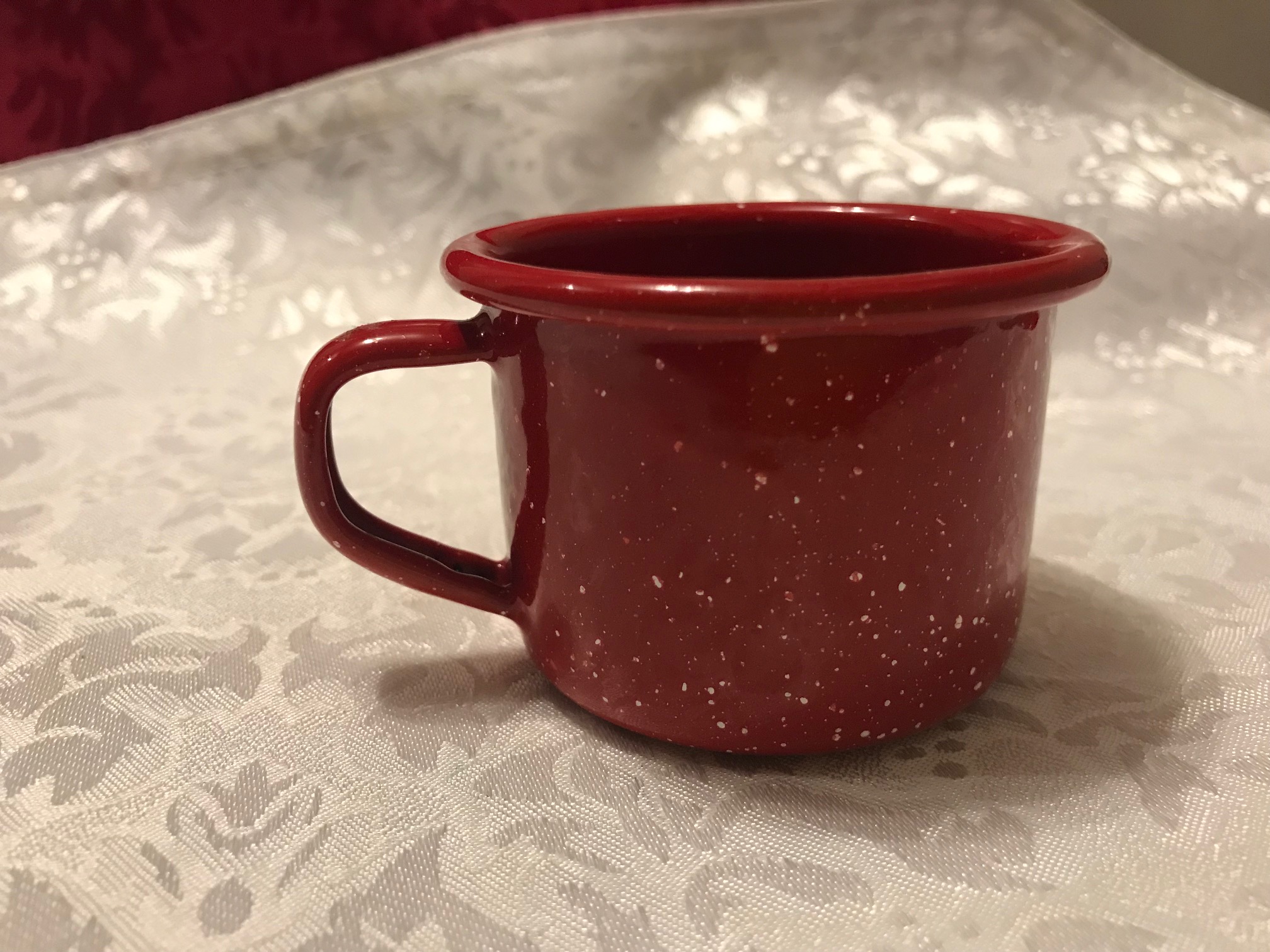
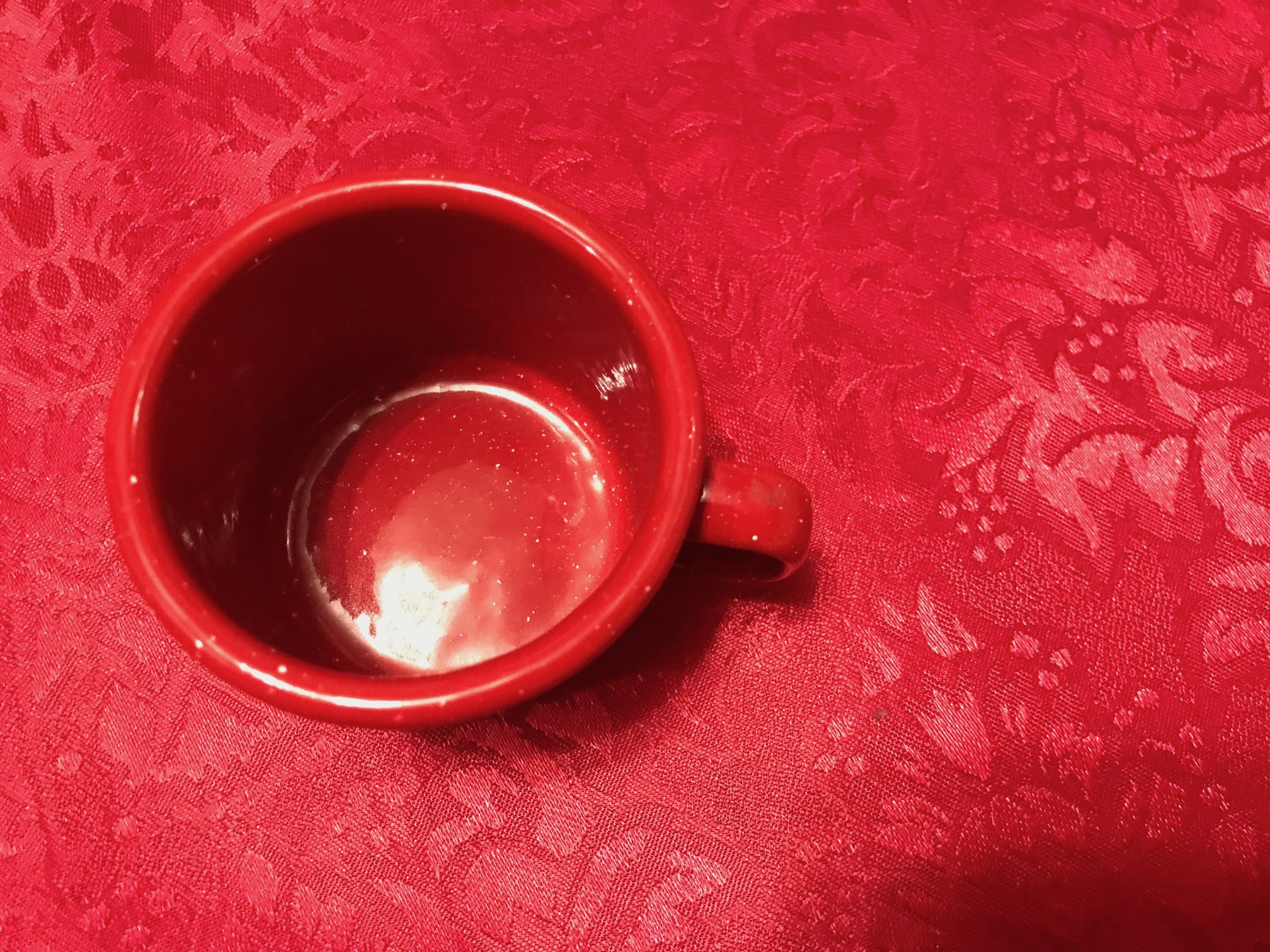
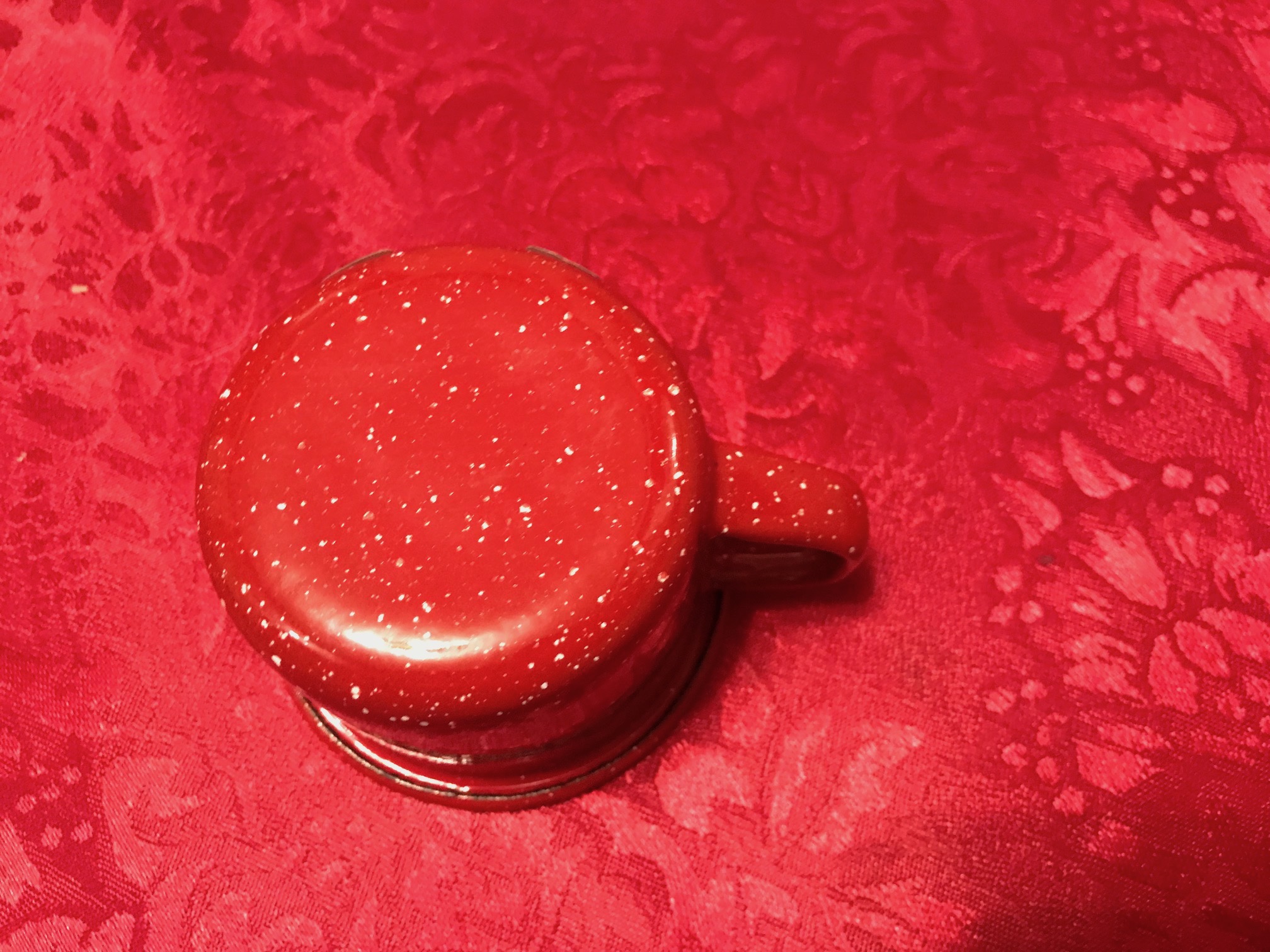
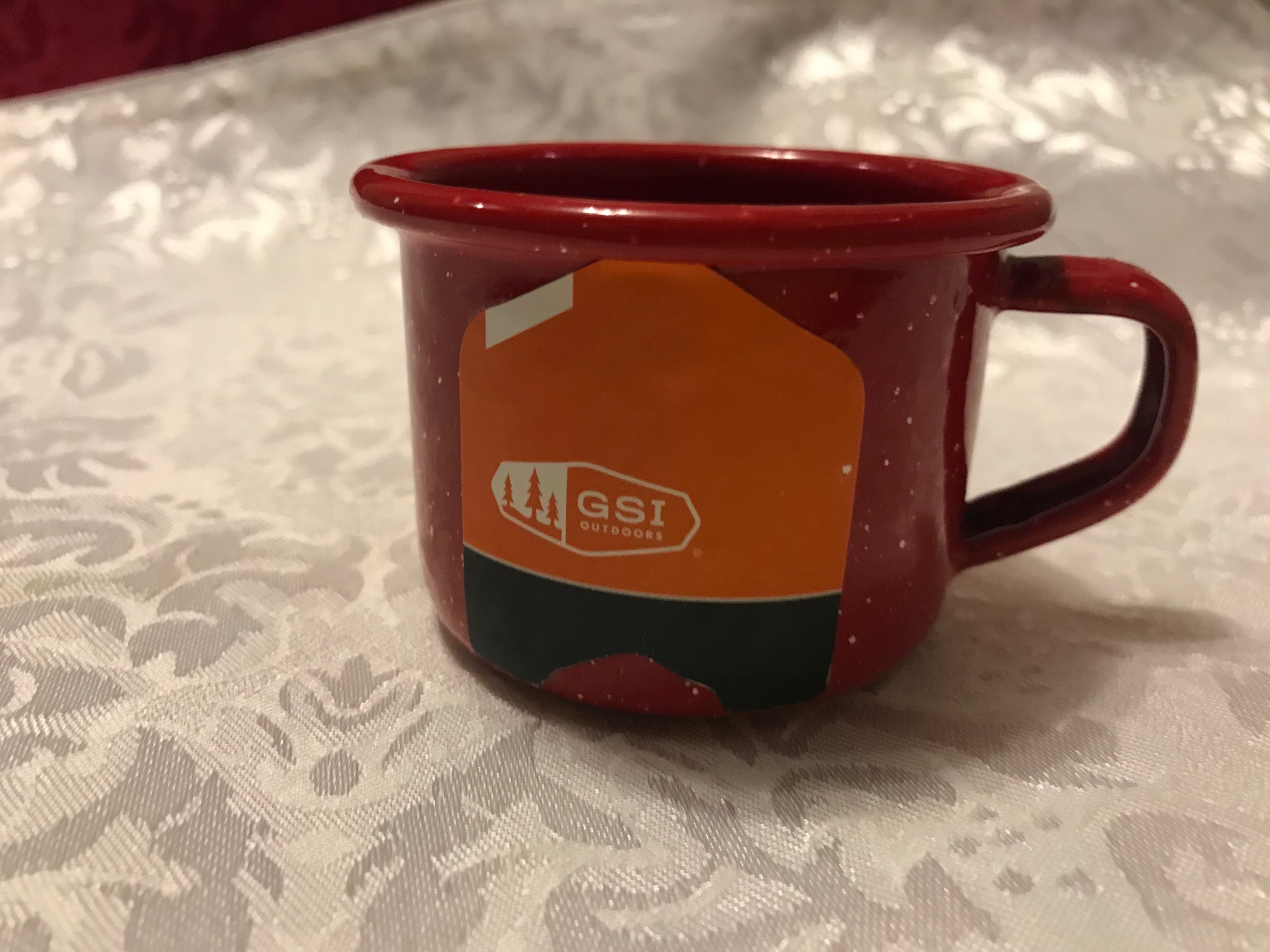

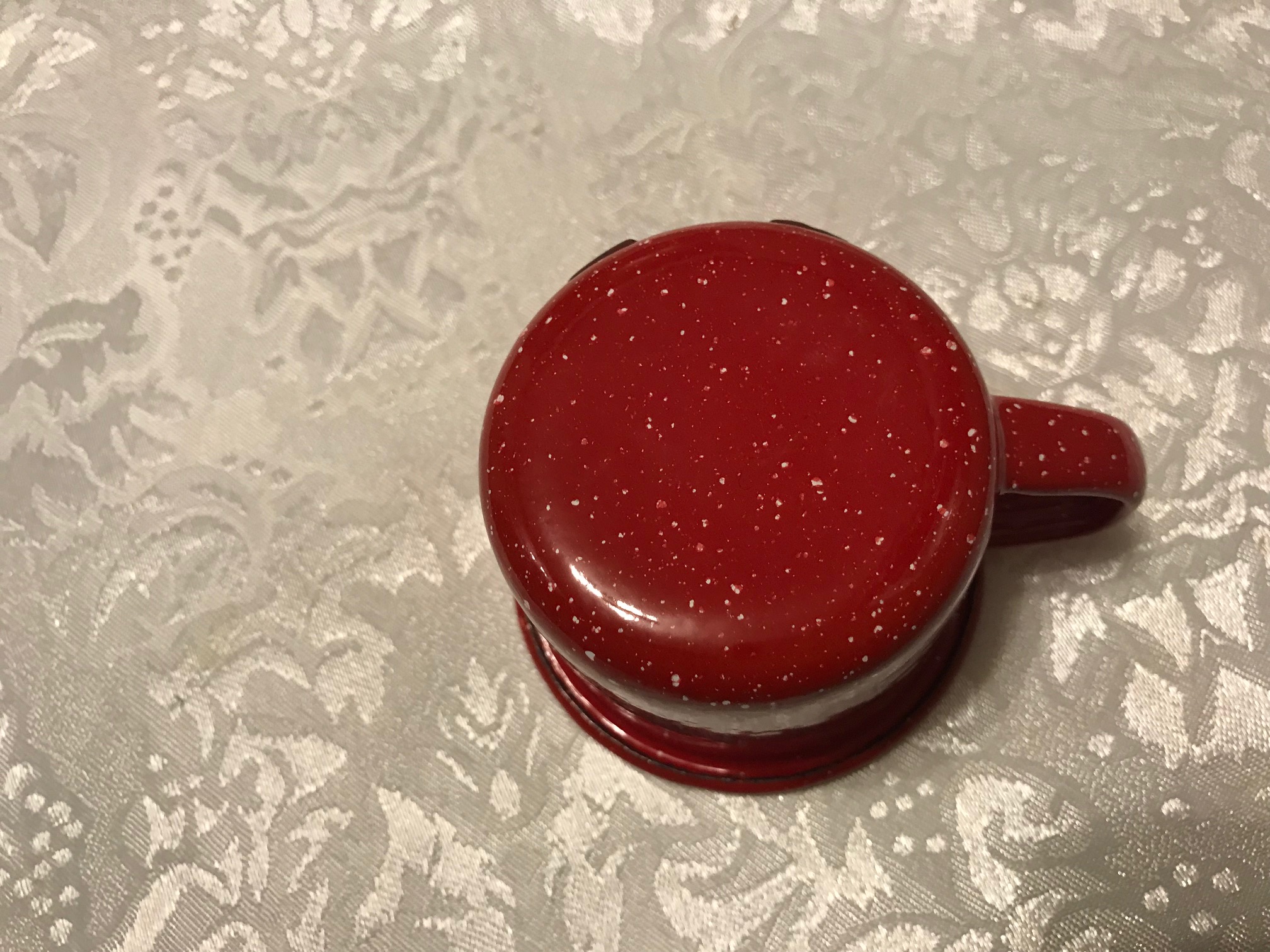

Hi Tamara,
I was unable to find an email address or phone number for you on your site, but request that you please call me or our Quality Control person.
GSI Outdoors complies with FDA, and/or CE, and/or JIS(Japan) food safety standards for all our products.
Each shipment of red enamelware is sent for 3rd party testing ! We XRF test at least 1 piece of every product entering out warehouse and elevate testing if we get reading that concern us. However XRF testing is not an accurate assessment of “food safety compliance”, but it helps guide us and suggests when additional testing is required
Here is the results (FDA) from a recent shipment of Red Enamelware. I have also attached the allowable limits for lead & Cadmium and they are extremely low (Lead.5 to 3ppm dependent on size and use / Cadmium .25 to .5 ppm)
SUMMARY OF TEST RESULTS
TEST REQUESTED CONCLUSION REMARK
Extractable Lead and Cadmium Content from Interior of Ceramicware – United
States Food and Drug Administration (FDA) Compliance Policy Guides (CPG),
Sections 545.400 (CPG 7117.06) and 545.450 (CPG 7117.07)
PASS
Extractable Lead and Cadmium Content from Interior of Tableware – California
Health and Safety Code, Section 108860 or California Tableware Safety Law
PASS
Extractable Element(s) Pb Cd
Maximum Allowable Limit (mg/L)
(For Type I – Average of 6 Trials)
(For Type II to VI – Any 1 of 6 Trials)
Type I – Flatware 3 0.5
Type II – Small Hollowware 2 0.5
Type III – Large Hollowware 1 0.25
Type IV – Cup and Mug 0.5 0.5[a]
Type V – Small Pitcher 0.5 0.5[a]
Type VI – Large Pitcher 0.5 0.25[b]
Hi Ian, Leach testing standards are distinctly different from XRF testing. XRF testing confirms the presence of metals, not whether or not they leach.
The focus of my work is discovering the presence of these metals, not determining whether or not they leach.
Some regulatory standards for Cadmium are also very specific about applying to total content limits (not leaching standards), you can read more about that here: https://tamararubin.com/2018/12/oprahs-favorite-things-2018-fearless-bracelet-as-high-as-303-ppm-cadmium/
As I mentioned in my private messages with you on Facebook, you have not broken a law because your product is not sold as a baby cup… that said it definitively is positive for Cadmium at the levels stated (the specific cup I tested, which was purchased in 2018.) My tests results are replicable. The instrument used is the same one used by the CPSC for consumer goods testing to confirm compliance with regulatory standards for the presence of toxicants (like Lead and Cadmium) in children’s goods. The instrument is always freshly calibrated prior to the testing I do and testing is repeated multiple times to confirm results.
It is also important to note that the concern is for the mere use of Cadmium as a colorant (in addition to whether or not it might harm the end-user.)
By companies using this toxic heavy metal as a colorant they are a contributing factor in creating a demand for this toxicant which pollutes the planet. Your company is contributing to the need for the mining, refining and production of the a pigment that is first and foremost unhealthy for our planet and is a known carcinogen to humans.
You can read more about that concern here: https://tamararubin.com/2017/01/the-red-exterior-enamel-on-this-le-creuset-tea-kettle-tested-positive-for-9163-ppm-cadmium-cadmium-is-a-known-carcinogen/
Through my work I encourage companies to use safer choices for their products (especially for product elements that are decorative and therefore elective) and I encourage consumers not to purchase products that are positive for any level of heavy metal (whenever possible.)
Many companies think that if their product tests negative for a toxicant with leach testing, that it does not contain that toxicant. This is simply a misunderstanding of the testing methodology.
Tamara
Tamara, thank you for all the work you do….We really appreciate it! Can you please post your complete opinion of Le Creuset Dutch ovens? I recall you weren’t keen on the company itself, and that you did test a red ramekin and found toxins, both inside and outside. My understanding is the company states that while certain bright colors have lead or cadmium in the OUTSIDE glaze, they maintain that all of the inside material doesn’t have lead or cadmium. I would like to purchase their dutch oven as a Christmas present, but would choose a color that they claim to be lead/cadmium free on the outside as well as on the inside. But what is your opinion? I am very distressed to find that the inside of the material apparently has toxins as well, and I obviously don’t want to purchase one with toxins…… Thank you so much!
This post has a summary of my considerations about this company:
https://tamararubin.com/2017/01/the-red-exterior-enamel-on-this-le-creuset-tea-kettle-tested-positive-for-9163-ppm-cadmium-cadmium-is-a-known-carcinogen/
Tamara, thank you for your reply. Do you have a suggestion for a safe, high quality Dutch Oven? I don’t cook much, but I really want to do so. I pay attention to material content and pretty much disregard “non-leaching” claims, because I believe that with age and the right conditions, anything will leach, and usually leaching standards are not as stringent as they should be anyway. I am currently using All Clad stainless steel, though I know that stainless steel has issues as well. I have spent a lot of money on Xtrema, but haven’t used any of them at all, because I saw your posts prior to use, but unfortunately after purchase. I don’t like cast iron because my research indicates that the type of iron it leaches isn’t good for the body, and even if it were, too much iron is bad and has been linked to dementia… I’ve heard mixed results on Visions cookware, depending on age/release date, and I would be a little anxious to use glass on an electric stovetop. Do you have suggestions? What do you use for a Dutch Oven?
We keep a vegan household primarily (the kids do eat some dairy and eggs, but not all the kids and not often)… so we don’t personally have any use for a dutch oven. I also have not found one (in my testing for others) that was completely free of toxicants. I’m sorry. What brands are you looking at? It seems like Staub might be the best brand at the moment: https://tamararubin.com/2017/12/staub/
Thank you, Tamara, for your work. I admit to being a bit overwhelmed after hearing about your site, but for now I’ll respond to the question about a dutch oven. I am wondering whether Everyday Living Roaster with Lid (Stainless Steel) might be okay…?
Hello Tamara,
Have you tested Life factory cups and glasses as well?
Thanks
Hi Lina!
Yes – overall I love the brand and think their products are good choices. I have never found any products from that brand to have Lead and do not generally have concerns with their products. Here’s my affiliate link to one of their cup sets – but any similar product by them should be fine: https://amzn.to/2rJiFaQ
Tamara